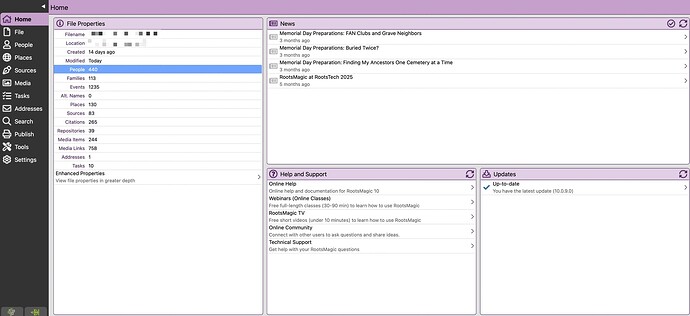This isn’t a tip. Nor is it a question. But I had to pick a tag!
Today is a full 2 weeks since I started manually transferring my tree of about 800 people over to RM10. I chose to go this route vs a gedcom import a) to learn the program really well, and b) cleaning up a gedcom mess is overwhelming.
Today I finally figured out how to attach all the repositories I’d already entered. And yesterday, I finally got syncing to Ancestry worked out. I quite like the manual sync, I can see exactly what’s going on. However… source titles end up as gobbedly gook on Ancestry. The citation and notes appear mostly okay, but I don’t understand why the titles look fine in RM and are destroyed on Ancestry. My tree is private, so I probably won’t worry about it.
I am quite pleased with the ease and ability to lump my sources. And I am very happy with citation web tags. Love the health tab, but not seeing much point yet in the DNA tab. There’s not enough detail to do much with it, or if there is, I haven’t discovered it yet.
The integration of maps into Places is sad. The developers should take a peek at how Synium’s MFT has integrated maps, and media. It’s a beautiful thing. But they are functional at least, I’ll get over it.
For those that switched from other software and chose manual entry, I’d be interested in your approach. I actually entered my direct lines with birth and death dates as far back as I’ve researched, then chose to work backwards, starting with census records, and adding lateral lines as needed, and now I’ve moved onto newspaper clippings, as I have probably 500 or more of those to enter. I seem to get in a groove if I choose one source type at a time. Yet I’ve only added 83 master sources, and 265 citations, despite spending copious hours the past two weeks!
I have spent a fair bit of time reading through this forum, learning from you all, and greatly appreciate the info that has been shared. I’m hoping to avoid having to redo much, but new software takes time to learn.
I love the groups, and have chosen to limit color coding to 3 colors, since you can only have one active per person, paternal, maternal, and DNA matches. Everything else is grouped.
All in all, quite pleased, and appreciative of this forum.
